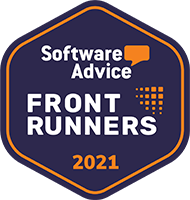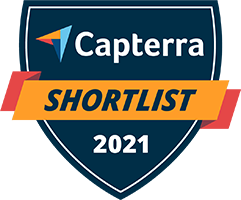How Distributors Can Meet Consignment Inventory Cost Reduction Targets with eTurns

COVID-19 forced many companies to look inward, reducing unnecessary costs while maintaining great service levels.
Distributors don’t want too much consignment inventory sitting on their customers’ shelves for too long, especially when the cost of carrying inventory is 25%-55% of inventory value. One of the best ways to reduce expenses is to ensure inventory stocking levels are optimized, so your customer (and your bottom line) is happy. So, how can distributors meet consignment inventory cost reduction targets this year?
Optimize Consignment Inventory Stocking Levels
By having their consigned inventory customers use the eTurns TrackStock App, which uses actual usage data to manage and replenish inventory, distributors can realize a double benefit.
First, TrackStock optimizes consignment inventory levels, ensuring distributors can meet customer demand without overstocking. Second, distributors can leverage the actual customer demand data collected with the TrackStock Precise Demand Planning® Solution (PDP) to optimize their own distribution centers, reducing carrying costs and improving customer service at the same time. PDP will tell distributors precisely what products will be ordered in what quantity on what day in the future.
The eTurns TrackStock app tracks usage and calculates optimum minimum and maximum levels, showing distributors and their customers exactly how much inventory they should have on-hand. The Min/Max Tuning Dashboard also shows how distributors are typically stocking up to 90% too much inventory in consigned customer stockrooms, which can provide an immediate source of one-time savings.
Increase Inventory Turns
By using actual usage data to optimize customer stocking levels, distributors can increase inventory turns. Increasing the inventory turnover ratio means increased efficiency and a faster rate of payment on the inventory. For example, if ACME Distribution has $500,000 of consignment inventory in their customer’s stockroom and it is turning over four times per year, ACME is being paid every 91 days (not good) and has $125,000 in cash tied up in inventory.
By using eTurns TrackStock Precise Demand Planning™ Solution to increase inventory turns, a distributor can make significant financial gains. By increasing inventory turns by just one per year, ACME Distribution now gets paid every 73 days and lowers the cash tied up in inventory by $25,000 annually, which also reduces inventory carrying costs.
Eliminate dead stock
Because the eTurns TrackStock App is based on actual usage data, distributors can identify dead or obsolete stock much faster than with traditional forecasting and reordering parameters of other software systems.
Automate VMI management
In addition to optimizing consignment inventory in customer stockrooms, the TrackStock app increases staff productivity and accuracy for Vendor Managed Inventory services by 4 to 10 times compared with manual processes. Therefore, distributors can redirect staff resources devoted to manual tracking of Vendor Managed Inventory services to other revenue-generating tasks. On top of that, TrackStock gives distributors the ability to easily transition from Vendor Managed Inventory to Customer Managed Inventory with our barcode scanning app for even bigger accuracy and productivity improvements. Distributors frequently see same-customer revenues increase up to 30% by providing TrackStock.
Summary
The TrackStock benefits for a distributor and their customers are similar. Distributors and customers who use TrackStock have removed cash of up to 73% of inventory value (one-time) and 25%-55% of inventory value annually from carrying costs. They also see increased productivity by 4 to 10 times vs. manual inventory management methods.
Try eTurns TrackStock Free for 30 days




